How To Do The Middle Splits – Unlocking Flexibility
Author:
Reviewed by:
(21 years of Oly Lifting experience)
Unlock your full potential by engaging with our experts and community! Have questions about your fitness journey or looking for expert advice on weightlifting techniques? Don’t hesitate — leave a comment below and Oleksiy Kononov will provide a personalized answer and insights to help you reach your goals.
Torokhtiy is reader-supported. Some links are affiliate links, and we may earn a commission at no extra cost to you. See our disclosure page for details.
Splits are a highly recognizable and fundamental element in many physical disciplines, including gymnastics, cheerleading, yoga, various dance styles, martial arts, and others.
The hard truth is, there are no shortcuts to learning how to do the middle splits. The journey to achieving your first split requires time and effort but ultimately rewards you with an impressive and useful skill that remains with you for life.
This article will set you on the right path to achieving your first middle split, with information sourced from the pros, including the best exercises and stretches for middle splits. But before we dive into details, here’s a quick answer.
How To Do The Middle Splits? Here’s how to do the middle splits: slowly slide your legs apart as far as comfortable, keeping your knees and toes pointing forward. For optimal practice, incorporate various lower-body stretches for middle splits and other exercises for your core and hips.
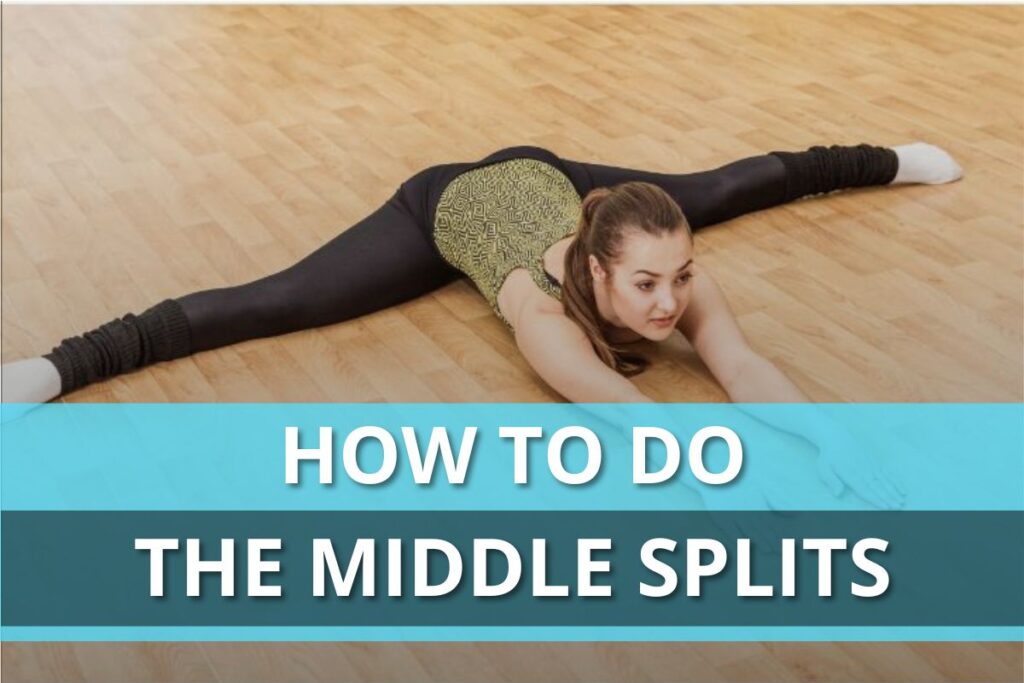
Why Are Middle Splits Important In Gymnastics: Physical and Mental Benefits
Learning how to get middle splits comes with its set of perks. Not only are you rewarded with a useful and impressive physical skill, but you also gain benefits that can improve your life along the way. Here are a few key points on what that looks like:
1. Improved Flexibility
When you practice middle splits, you stretch the muscles surrounding your hip, groin, and thigh areas. Over time, this should result in greater flexibility in those areas, which should translate to other gymnastic skills as well as real-life movements like walking and running.
2. Increased Mobility
Practicing middle splits open up your range of motion (ROM) in the hip area. This improved ROM is essential for executing movements that require leg extensions, body rotations, standing in different positions, and more, which will raise your gymnastics level as well as improve your daily life.
3. Injury Prevention
Working on your flexibility and improving your range of motion through training middle splits will result in fewer injuries, particularly in the hips and legs. This applies to both physical training and everyday life. Practicing activities such as cheerleading, dance, or sports that involve changing directions benefits from increased hip mobility, which can help prevent common injuries like muscle strains and sprains. Similarly, in real-life situations such as falls, slips, or uneven steps, having a greater degree of hip flexibility can be the differentiating factor between a minor inconvenience and a potential injury.
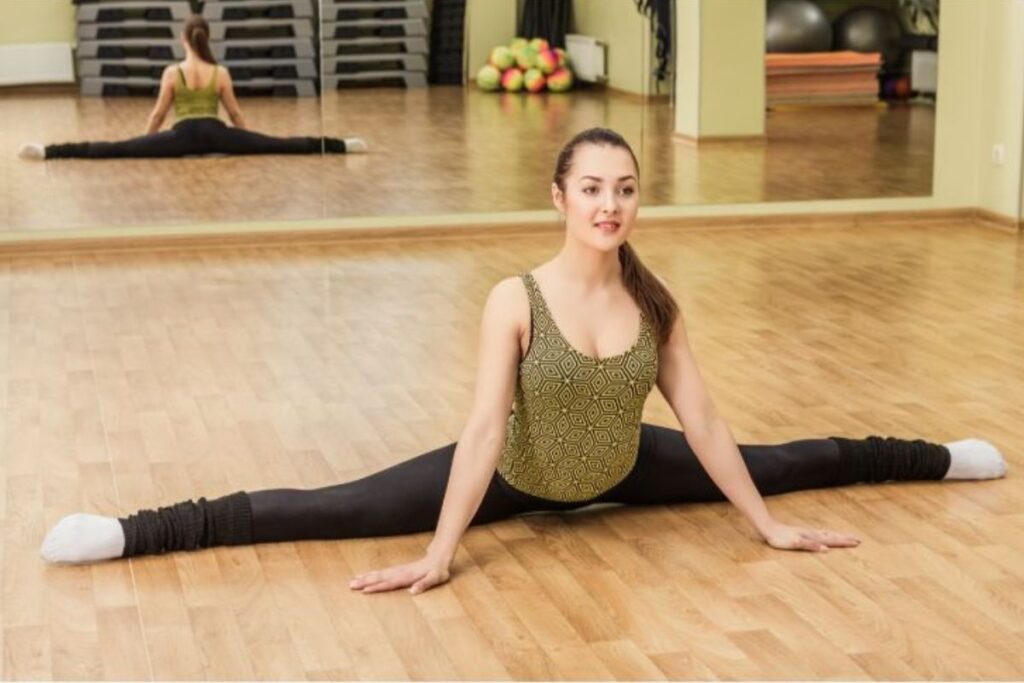
4. Postural Alignment
Many of us are stuck sitting down for large parts of our days either for work or entertainment. As a result, our hips, lower back, glutes, and core are constantly under pressure, which over time results in worse posture. Meanwhile, practicing middle splits engages your core and stretches the same muscle groups that suffer as a result of prolonged sitting, leading to improved alignment between your pelvis and spine and improving your posture.
5. Motivation And Determination
As briefly touched upon, middle splits and similar skills are not something you pick up overnight. That said, if you dedicate yourself to learning them, you will be subjected to various neurochemical processes associated with learning and mastering a new ability.
For example, making progress and noticing improvement in your middle split will release “happiness” chemicals in your brain, such as Dopamine and Serotonin. The former is tied to immediate feelings of motivation, satisfaction, and pleasure, while the latter improves our overall mood and sense of self-satisfaction.
Moreover, reaching a long-lasting goal comes with a high sense of accomplishment and enthusiasm for learning. This phenomenon is commonly referred to as goal attainment satisfaction or achievement satisfaction. Research on the subject suggests that people who experience achievement satisfaction have higher overall life satisfaction as well.
6. It’s A Cool Skill To Have
At the end of the day, learning how to do middle splits can be fun and exciting and results in an impressive and useful skill to have. Being able to effortlessly do a middle split can be a cool party trick, but more importantly, it may be the difference maker in your next gymnastics, cheerleading, or dance audition. It can be helpful in regular sports as well, being able to more effortlessly extend your legs is useful for tackling in soccer, returning in tennis, kicking in martial arts, etc.
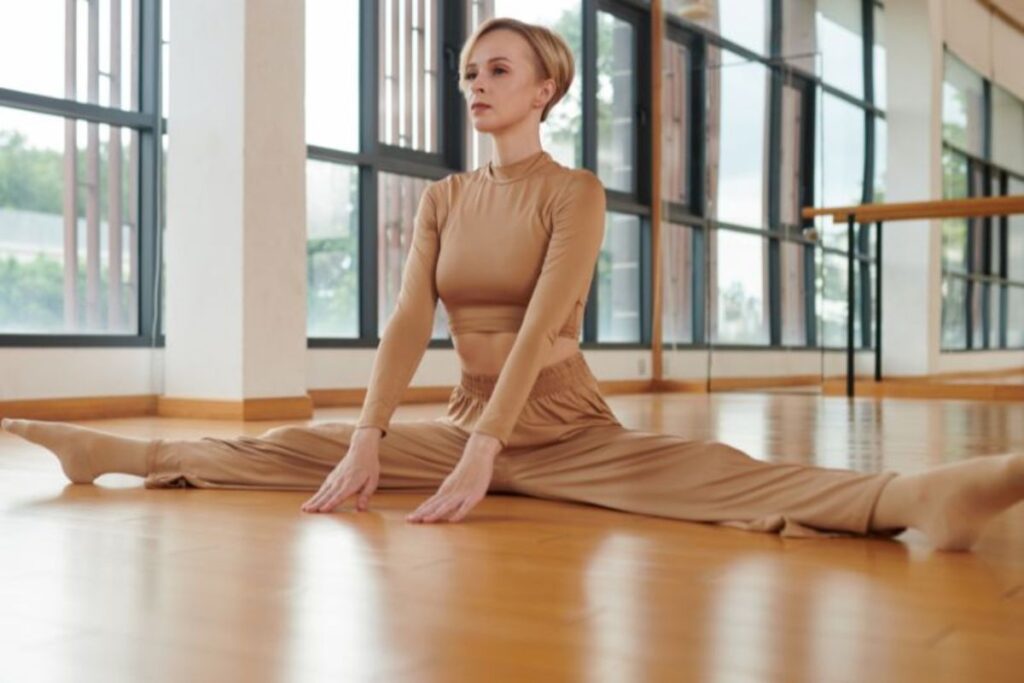
How To Do The Middle Splits Step-By-Step?
Splits may seem difficult to learn at first, but they’re not impossible. Here’s are the steps you need to take to learn the middle split:
1. Start With A Proper Warmup
All proper exercise regimens start with a warmup. It’s necessary to raise our metabolic and cardiovascular activity and stretch out the muscles and joints in preparation for physical activity. Warmups also play a crucial role in reducing the chance of injury.
2. Mind Your Posture
Maintaining an upwards posture and a straight back are key to performing splits and properly and safely. Throughout the descent, it’s crucial that you keep your core engaged, preventing yourself from leaning forward or backward and losing balance. Moreover, it’s important to practice looking forward, as a raised chin ensures an aligned upper spine and makes the split visually pleasing.
3. Control The Descent
When practicing splits, losing control poses the greatest risk of injury. If you are not yet capable of executing a full split, it is advisable to practice near a support structure. For instance, in a fitness studio, a ballet bar can serve as a reliable aid, while at home, secure furniture like a couch can provide assistance for your arms, helping you descend and ascend safely.
Follow us!

Free!
Get a 2-week Weightlifting Program as a bonus for the subscription to kickstart your training plan!

Free!
4. Mind Your Breathing
Improper breathing and long breath holding tends to tense the muscles. Stiff muscles not only make it harder to do a split, forcing them to stretch out increases the likelihood of tears. A combination of deep breaths and a consistent breathing rhythm helps you feel more relaxed, and your body will respond accordingly.
Tip for splits: As you start your split, remember to inhale at the top and exhale as you lower yourself down. Then, come back up with your pelvis at the top and take a deep breath once more.
5. Now Do The Split
To start your split, first extend one leg and then the other, focusing on a controlled and fluid downward movement. When you reach the halfway point, utilize your hands for balance and to regulate your descent. As your pelvis approaches the floor, smoothly transition your support from your hands to your hips. Keep your back straight, engaging your shoulder blades to enhance your posture. Slowly rotate your knees forward while exhaling, allowing your pelvis to gracefully and effortlessly touch down.
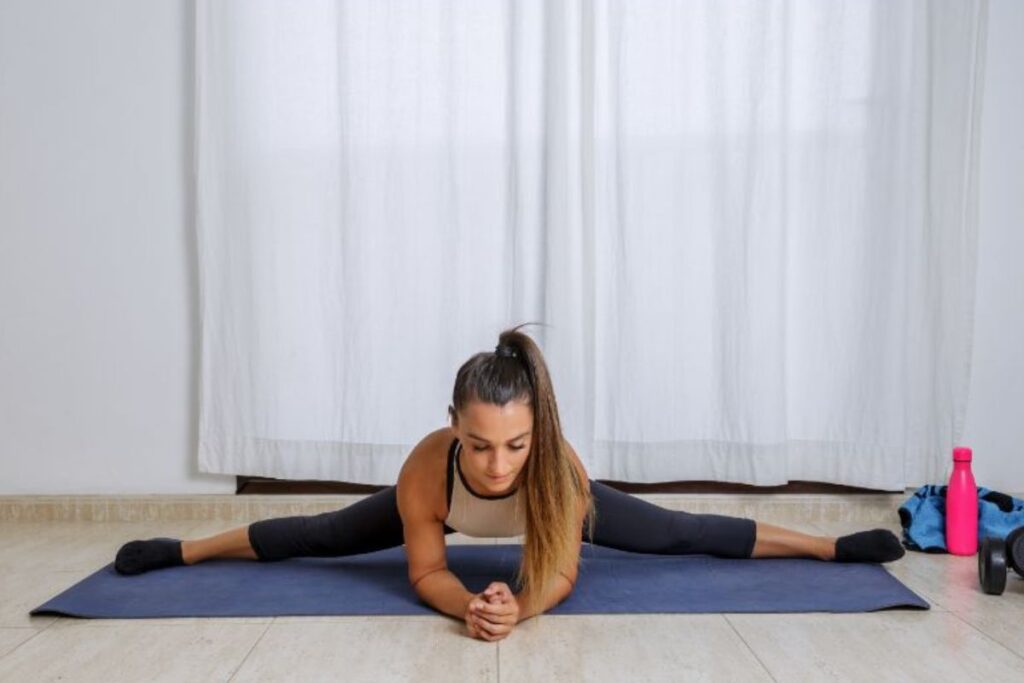
How To Learn The Middle Splits Fast And Safe?
Now that you know how to do middle splits step-by-step, here are some additional tips to guide you along and make the process faster and safer.
1. Stick To A Program
The great thing about learning how to do middle splits is you don’t have to go in blind or reinvent the wheel. Picking up a certified training program made by an expert and sticking to it is the safest way to know you’re doing things correctly.
2. Take Sufficient Rest Time
Resting during, but more importantly in-between training sessions is an underrated part of fast progress. Insufficient rest prevents your body from adapting what it “learned” through training, on top of increasing the chance of injury due to insufficient muscle recovery.
3. Look For Guidance
If you’re practicing middle splits on your own, it’s always a good idea to seek guidance from a pro, such as a gymnastics teacher, dance instructor, or other qualified coach.
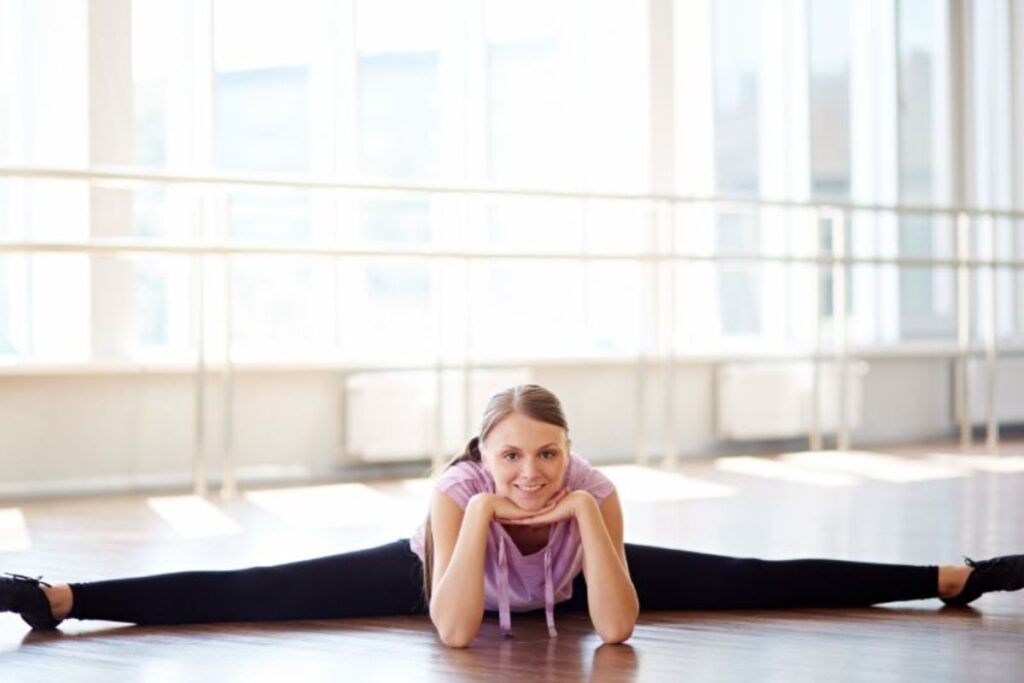
Middle Splits Progression: How To Improve Your Middle Splits?
Your middle splits will progress even faster if you incorporate supportive training and use tools at your disposal to improve your training experience. Here are some tips:
1. Always Keep Stretching
Practicing the middle split stretches your body to a high amount. Even so, incorporating other stretch exercises into your split workout and daily routine will lead to even greater progress. For starters, incorporate active stretching exercises like leg swings, hip rotations, high knees, and walking lunges into your warmup. Second, when not practicing splits, incorporate static stretch exercises that target muscle groups included in the middle split. For example, the tried and true
straddle stretches, standing forward bends, single-leg half splits, and some yoga poses like the pigeon, frog, or lizard.
2. Train Your Core
A gymnast’s core is as solid as a rock, and core training is an essential part of their training regimen. When aiming to learn middle splits, a strong core will greatly benefit you by preventing unwanted forward and backward leaning and helping you maintain a straight posture. Moreover, vital core muscles such as the obliques and erector spinae contribute to controlling and stabilizing the hips, minimizing unnecessary movements.
3. Use Props To Assist You
Learning how to do middle splits should be a safe and comfortable process. This can easily be improved with a few simple props you should have at your disposal. Start by getting a proper yoga mat or another form of soft gym flooring. Second, find items that can support your body underneath as it attempts to stretch out beyond its current conditions.
If you’re fairly new to gymnastics, it may take some time before you can actually reach the floor with your split. In these cases, it’s perfectly fine to start easing down into a chair or a stool and sitting on it as your legs attempt to stretch out. Later down the line, as you get closer to a full split, you can use soft items such as yoga blocks, pillows, or folded towels to fill up the space underneath your legs and make it more comfortable.
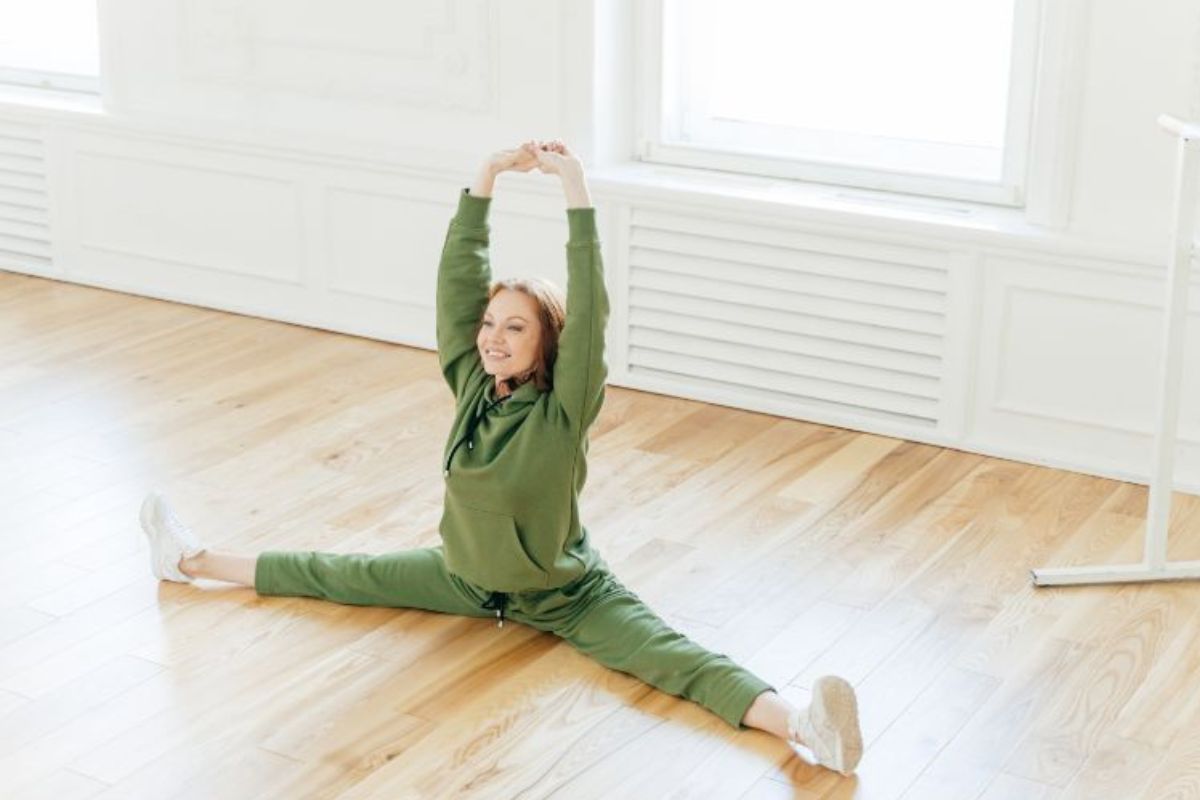
Muscles Worked While Middle Splits
Apart from achieving higher mobility and flexibility, practicing your middle splits is an excellent way to work out and tone your lower body. Here are the main muscle groups worked in the middle split.
1. Hip Adductors
Hip Adductors or simply adductors are located around your inner thighs. The muscle group primarily includes the adductor longus, adductor brevis, adductor magnus, and gracilis. They’re named this way because they’re responsible for adduction, the movement that brings your legs closer together. During middle splits, these muscles are actively engaged and stretched as your legs attempt to widen apart.
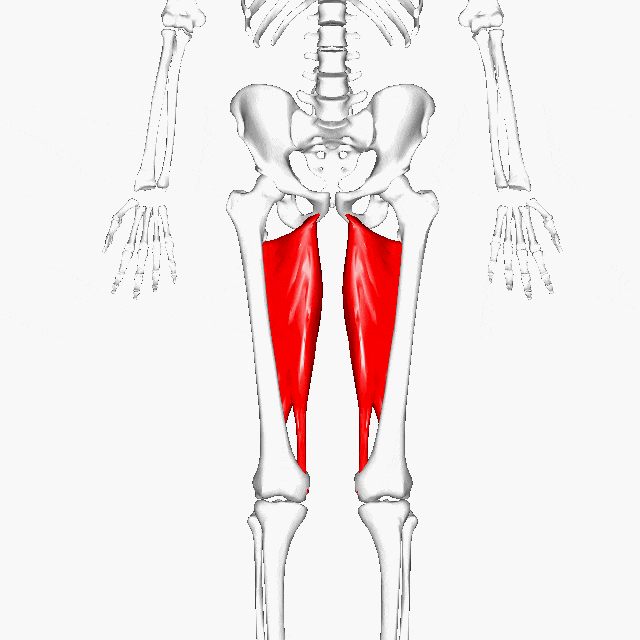
2. Hamstrings
The Hamstrings are a group of three intertwining muscles at the back of your thigh. They consist of the semitendinosus, semimembranosus, and biceps femoris. Their main goal is to help extend the hips and flex the knees, making them crucial for lengthening your legs open and achieving the correct split form.
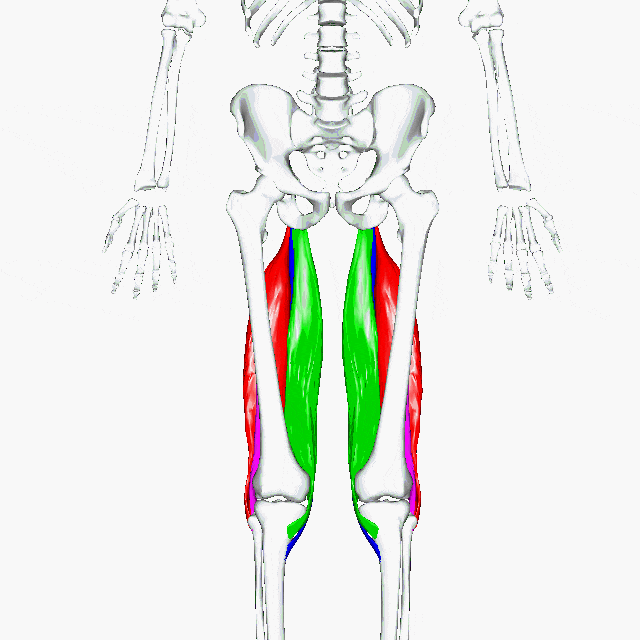
3. Gluteal Muscles
The Gluteal muscle group, commonly referred to as the glutes or gluteus, consists of three muscles: the gluteus minimus, gluteus medius, and gluteus maximus. The largest of these three, the gluteus maximus, is highly responsible for outward hip extension, while the two smaller muscles are meant to stabilize the hips and maintain proper alignment, particularly of the pelvic area, during middle splits.
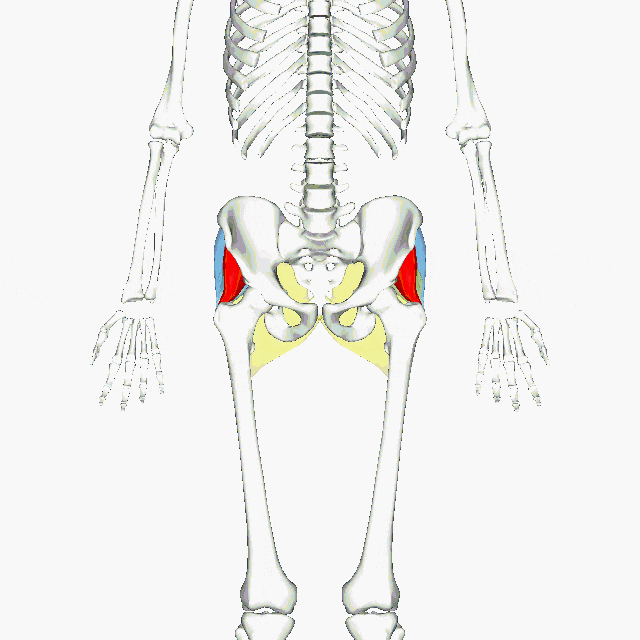
4. Hip Flexors
Hip Flexors consist of the iliacus, psoas, pectineus, sartorius, and rectus femoris. These muscles are responsible for bringing your knee above your waist and to your chest. The rectus femoris in particular plays a huge role in middle splits, as it is directly responsible for extending your leg below the knee. Insufficient flexibility in the rectus femoris is among the biggest hurdles to overcome to achieve your perfect middle split.
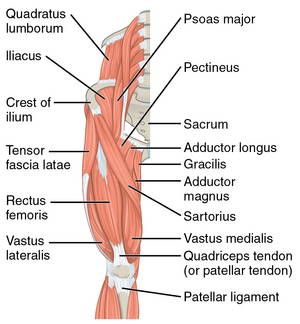
5. Quadriceps
Located at the front of the thigh, the Quadriceps Muscles, sometimes simply called the quads, consist of the vastus lateralis, vastus medialis, and vastus intermedius, and also include the previously mentioned rectus femoris. This creates a clear bridge between the quads and hip flexors and links the hips with your knees. During middle splits, the quadriceps help maintain leg alignment and stability, particularly in assisting with knee extension.
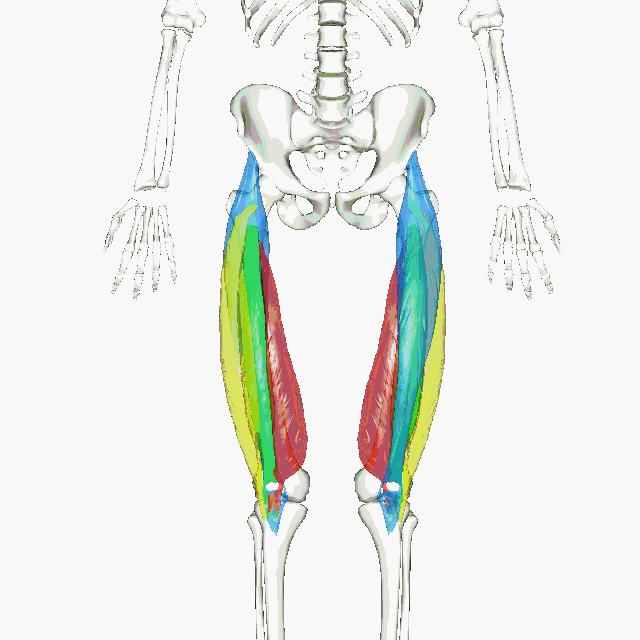
6. Core Muscles
In everyday conversation, the word “Core” is often misused to simply represent the abdominal muscles or “abs”. However, the actual Core Muscle group includes a variety of muscles, most notably the obliques, rectus abdominis, and transversus abdominis, as well as muscles in your lower back such as the erector spinae. While these muscles are not directly involved in the middle split, they play a crucial role in stability and support between the spine and pelvis, assuring proper upper body alignment and balance.
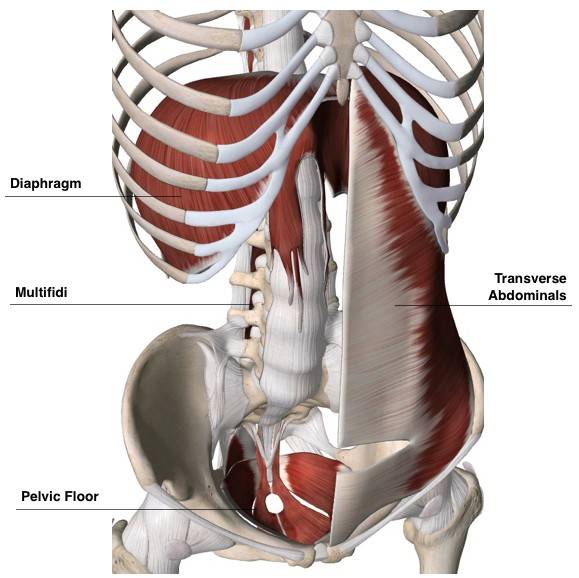
Risks Of Making Middle Splits
If you’re not careful in your approach, learning how to do middle splits comes with a set of risks. For the majority of people, a full middle split is not a natural body position, meaning there are various points of stress which can get injured, especially as you first start learning. Here are some examples:
1. Strains And Sprains
As mentioned, middle splits require various muscle groups in your lower body to stretch out at the same time. Attempting a middle split without a proper warmup or from an uncomfortable position can easily lead to strains or sprains in the various muscle groups. Of course, this factor goes down as your middle split ability improves, but it never truly goes away no matter your experience.
2. Knee Injuries (Ligament Tears)
Your knees are a sensitive joint that connects your upper and lower leg using four main ligaments: the anterior cruciate ligament (ACL), posterior cruciate ligament (PCL), medial collateral ligament (MCL), and lateral collateral ligament (LCL). Ligaments can easily be torn by sudden or excessive force or prolonged twisting and stretching of the knee joint, such as by over-exercising or suddenly entering into your middle splits.
When a ligament tear occurs, it means that the ligament fibers have been stretched, partially torn, or completely ruptured. Such injuries can take athletes out of training for weeks or even months, may require surgery to adjust, and often never fully recover.
3. Overtraining
When reaching for a new goal, it can be mentally challenging to stop yourself from overtraining. Learning splits can be exciting and every time you see progress it will motivate you to train further, but it’s important to leave enough time for your body to recover, to prevent the chance of injury and muscle fatigue.
That said, don’t mistake overtraining for hard work, which is a necessary part of learning any physically demanding skill. It’s vital that you stick to your structured workout routine, even if it’s a minimal plan. Remember, normal levels of pain and stiffness are to be expected so, after a hard day of training, reward yourself with a hot bath or shower to relax your muscles.
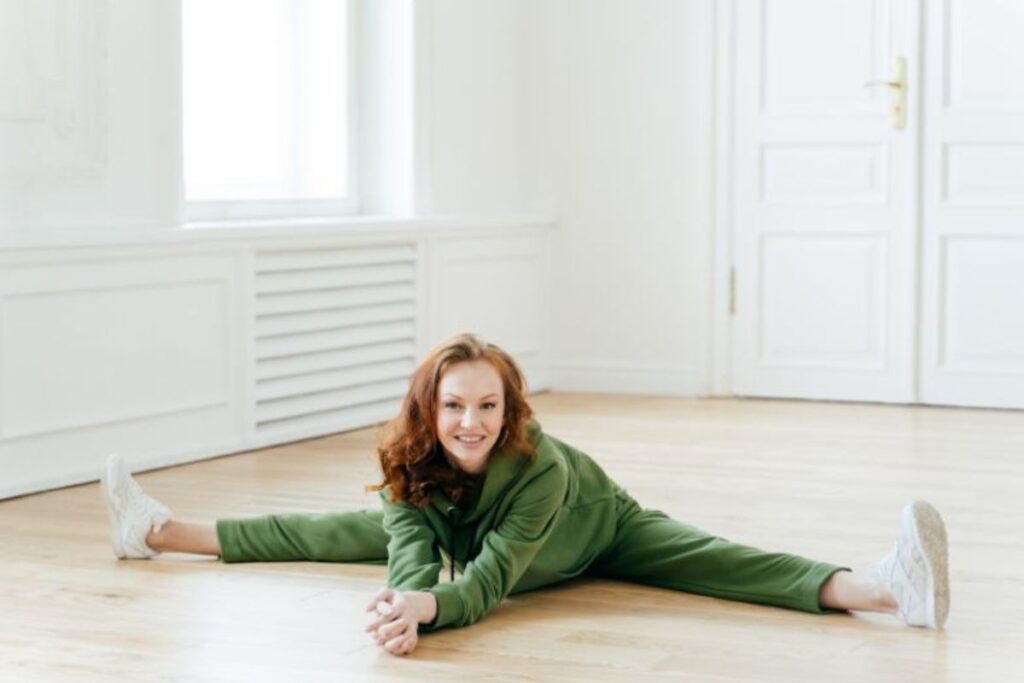
Can You Make Middle Splits If You Are New To Gymnastics?
Unless you have prior physical training that involves similar biomechanics as gymnastics, such as excessive training in dance, martial arts, or yoga, for example, the chances of picking up middle splits quickly as a novice gymnast are not high.
Beginner gymnasts should be especially patient and careful with their practice, and stick to proper training routines set by their coach or premium training program. This includes regular warmups that include active stretching, consistent training without overworking, and seeking guidance and feedback from the pros.
Can Children Do Middle Splits?
Absolutely! In fact, you might have noticed that children are naturally more flexible than adults. Two factors play a huge role in why this is the case. Firstly, children are initially born with a higher number of bones, some of which fuse over time and they grow into adults. Second, children’s bones are more flexible than adult bones, leading to a lower feeling of discomfort and a lesser chance of fracture.
This allows children to reliably learn physical activities that require mobility and flexibility faster than adults. Theoretically, this means your child should pick up middle splits fairly easily. Furthermore, physical abilities obtained during childhood can often stay with you for the rest of your life without the need for re-learning. In fact, pediatricians highly recommend gymnastics as a physical activity for kids for this reason. Studies suggest that children who practice gymnastics show improved posture control and physical literacy (the understanding of physical activity importance).
FAQ
Can Everyone Do Middle Splits?
With proper training and enough dedication, eventually, everyone can achieve a middle split. This is, of course, assuming no outstanding physical challenges are preventing you from doing it.
How Long Does It Take To Do Middle Splits?
How long to do middle splits depends on factors including current fitness level, previous training experience, as well as practice frequency, among other things. Those with prior experience in related activities like gymnastics or dance may have better baseline knowledge and physical readiness to learn them, seeing great results within a few weeks. For others, it may take up to a few months, but it’s important to keep training as long as you see progress.
Are Middle Splits or Side Splits Easier?
In general, middle splits tend to be easier compared to side splits. This is mainly due to the fact that middle splits utilize the same movement for both legs, while side splits require the legs to move in opposite directions, necessitating a significant level of hip flexibility.
Conclusion
You’ve reached the end of our article on how to do the middle splits. We hope you found it entertaining and informative.
Middle splits are a fun and rewarding gymnastics skill to learn that also come with benefits that will help you in physical activities, sports, and real life. Practicing your middle split stretches your lower body, leading to greater mobility, flexibility, posture, and more. Furthermore, it’s an excellent way to work out and tone major muscle groups, leading to a stronger and better-looking physique.
We’d love to hear from you as well. Have you practiced middle splits before or are you a first-time learner? Also, are there any physical activities or hobbies, such as gymnastics or dancing, you hope to incorporate them into?
Leave a comment letting us know and remember to follow our social media pages where we post lots of valuable fitness and wellness content.
Also read:
- How to Do Straddle Splits
- Can Anyone Learn to Do the Splits
- How Long Does It Take To Learn the Splits
- Stretches for Splits
- Benefits of Doing the Splits
- Side Splits Stretches
References:
- Range of Motion // Physiopedia: https://www.physio-pedia.com/Range_of_Motion
- Flexibility and stretching: preventing sports injuries // SportsPerfomance: https://www.sportsperformancebulletin.com/training/strength-conditioning–flexibility/flexibility-and-stretching-preventing-sports-injuries
- Ergonomics for Prolonged Sitting // UCLA Health: https://www.uclahealth.org/medical-services/spine/patient-resources/ergonomics-prolonged-sitting
- Dopamine // ClevelandClinic: https://my.clevelandclinic.org/health/articles/22581-dopamine
- Serotonin // ClevelandClinic: https://my.clevelandclinic.org/health/articles/22572-serotonin
- Achievement goals and life satisfaction // NCBI: https://www.ncbi.nlm.nih.gov/pmc/articles/PMC6974350/
- The effectiveness of neuromuscular warm-up strategies, that require no additional equipment, for preventing lower limb injuries during sports participation // BMC: https://bmcmedicine.biomedcentral.com/articles/10.1186/1741-7015-10-75
- Effectiveness of Progressive Muscle Relaxation // NCBI: https://www.ncbi.nlm.nih.gov/pmc/articles/PMC8272667/
- Hip Adductors // Physiopedia: https://www.physio-pedia.com/Hip_Adductors
- Hamstrings // Physiopedia: https://www.physio-pedia.com/Hamstrings
- Gluteal Muscles // Physiopedia: https://www.physio-pedia.com/Gluteal_Muscles
- Hip Flexors // Physiopedia: https://www.physio-pedia.com/Hip_Flexors
- Anatomy, Abdomen and Pelvis, Rectus Femoris Muscle // NCBI: https://www.ncbi.nlm.nih.gov/books/NBK539897/
- Quadriceps Muscle // Physiopedia: https://www.physio-pedia.com/Quadriceps_Muscle
- Rectus Femoris // Physiopedia: https://www.physio-pedia.com/Rectus_Femoris
- Core Muscles // Physiopedia: https://www.physio-pedia.com/Core_Muscles
- 7 Benefits of Soaking in a Hot Tub // HealthLine: https://www.healthline.com/health/hot-tub-benefits#health-benefits
- Why are toddlers so flexible? // BBC: https://www.bbc.co.uk/tiny-happy-people/amazing-toddlers-bendy-tots/znvvy9q
- The effect of educational gymnastics on postural control of young children // Frontiersin: https://www.frontiersin.org/articles/10.3389/fpsyg.2022.936680/full
- Photos by mediaphotos, Canva.com; Viorel Kurnosov, Canva.com; SergiyMolchenko, Canva.com; vkstudio, Canva.com; Milkos, Canva.com; Juan_Algar, Canva.com.
Why Trust Us?
With over 20 years in Olympic weightlifting, strength training, nutrition coaching, and general fitness our team does its best to provide the audience with ultimate support and meet the needs and requirements of advanced athletes and professional lifters, as well as people who strive to open new opportunities and develop their physical capabilities with us.
By trusting the recommendations of our certified experts in coaching, nutrition, and sports training programming, as well as scientific consultants, and physiotherapists, we provide you with thorough, well-considered, and scientifically proven content. All the information given in the articles concerning workout programming, separate exercises, and athletic performance, in general, is based on verified data.
The product testing process is described in more detail here.
Author: Oleksiy Kononov
Former Cirque Du Soleil Artist
Ukrainian Gymnast
More than 25 years ago Oleksiy started his sports career. He major in gymnastics which is definitely not an easy sport to go in for!
To become an athletic champion (in Ukraine, for instance, we mean here the title of “Master of Sports”) in gymnastics, one needs to spend at least 10 years and start training no later than being six years old. As for Oleksiy, he has fulfilled all the criteria.
During this period of time, definitely not short, he managed to become:
- Master of Sports, Champion of the State and International Tournaments;
- Member of the national team of Ukraine, having a perfect opportunity to train the best team ever!
- Part of Cirque Du Soleil team (as an artist).
Reviewed by: Oleksiy Torokhtiy
Olympic Weightlifting Champion, PhD in Sport Science
Best Results: Snatch – 200 kg,
C&J – 240 kg
Oleksiy Torokhtiy is a professional athlete boasting 20 years of experience in Olympic weightlifting. With multiple European and World titles under his belt, he has showcased his prowess in two Olympic Games (Beijing 2008 and London 2012). Upon concluding his illustrious career, Oleksiy dedicated himself to coaching. By 2022, he had conducted over 200 weightlifting seminars worldwide. He is the visionary behind an international sportswear and accessories brand known for its motto, “Warm Body Cold Mind.” Additionally, he is an esteemed author and the creator of a series of training programs and eBooks.

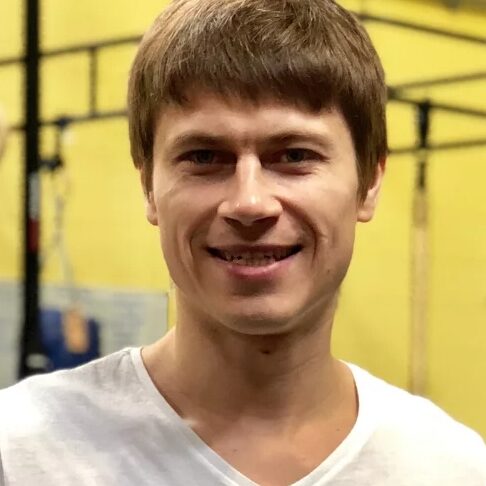


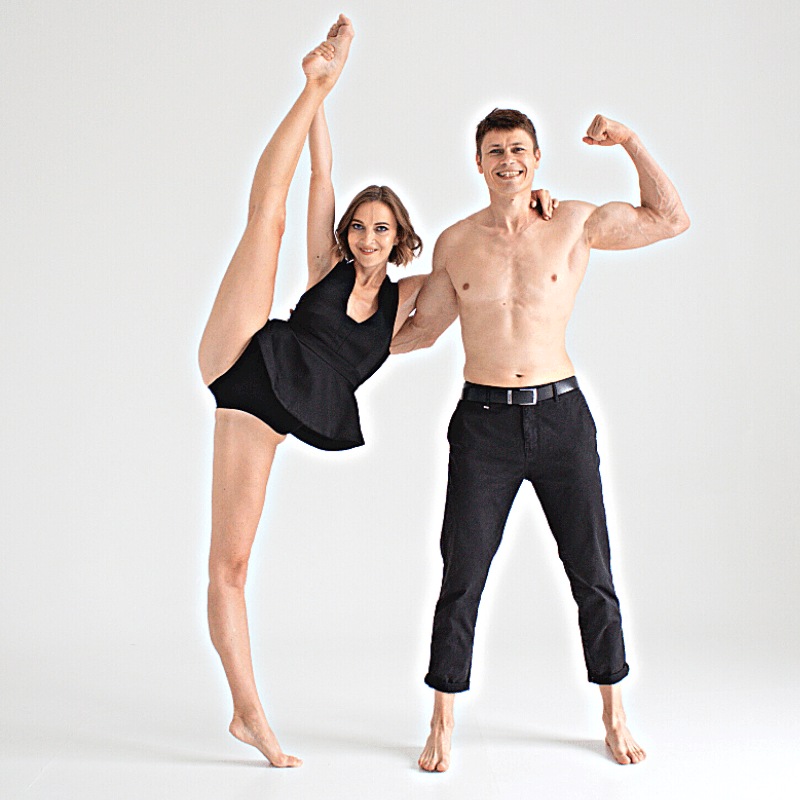
Still have questions after reading our article? Unlock your full potential by engaging with our experts and community! Don’t hesitate — leave a comment below and Oleksiy Kononov will provide a personalized answer and insights to help you reach your goals.